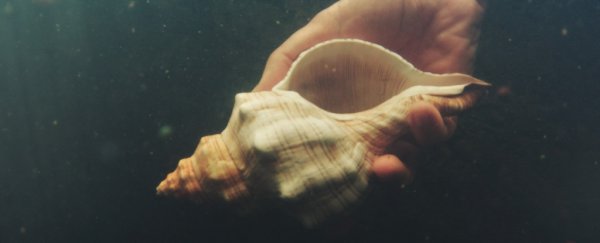Neanderthals are not nearly as oafish or as dim-witted as we once thought. Not only did this fellow hominin walk upright with a posture not unlike our own, but some populations in Western Europe might even have swum on a regular basis.
A fresh analysis of 171 shells, found in a Neanderthal archaeological site in Italy, suggests this long-extinct population used to dive for tools on the ocean bottom, long before the arrival of modern humans and their fishing practices.
The cave where these ancient artefacts were found, known as the Grotta dei Moscerini, was first excavated in 1949, and the contents have been dated to more than 70,000 years ago - a time when modern humans were yet to to establish themselves across Europe.
Unfortunately, this cave is no longer accessible. But its assortment of 171 clam shells has been well curated over the decades, allowing researchers to carry out a microscopic analysis that revealed Neanderthals were capable of far more than we thought.
Not only were these shells shaped by hand into useful tools, the authors say nearly a quarter had been collected underwater from the seafloor as live animals.
Each and every one belongs to the Mediterranean smooth clam species Callista chione, and by comparing various factors of their appearance - such as rough edges, shininess and encrusted barnacles - a shell specialist was able to determine which were collected from the beach, already dead, and which were scooped from the sandy ocean floor, fresh as can be.
"The live animals that lived in the sea had a shiny shell," archaeologist Paola Villa from the University of Colorado Museum of Natural History explained to The New York Times.
"The ones that are thrown by storms or dragged by a current onto the beach, because they sat in the sun and in the sand, their outer shells are opaque and not as shiny."
Many of these thin and sharp shells showed evidence of 'knapping', which suggests they were used as tools, although it remains unclear as to whether the Neanderthals actually ate what meat was inside.

The new findings join a growing body of evidence that suggests Neanderthals did not simply wade for shells. Instead, similar sites and recent anatomical studies suggest skin-diving in low waters, probably two to four metres deep, was a common activity for these early hominins.
A paper published last year, for instance, found Neanderthals exhibited extremely high levels of bony growths in their external ear canal, and at least in humans, this is often linked to cold water exposure.
One explanation is that Neanderthals spent a good amount of time harvesting aquatic resources, even though the species was thought to be too unintelligent to achieve this.
"It reinforces a number of arguments and sources of data to argue for a level of adaptability and flexibility and capability among the Neanderthals, which has been denied them by some people in the field," palaeoanthropologist Erik Trinkaus from Washington University in St Louis told AFP in 2019.
Other recent studies have even uncovered evidence of freshwater fishing by Neanderthals in France, although some still see this as far beyond their capabilities.
Compared to beach-combing, gathering shells from the seafloor is time-consuming and energy-sapping, but the authors of the new study point out that buried clams are often much thicker than those that wash up on shore.

This makes the underwater shells far better for tool-making, but it's not just clams these Neanderthals were interested in.
For the first time, the study also found pumice stones amongst the cave's remains, which were likely used as abrading tools, and which probably drifted into the Gulf of Naples from nearby erupting volcanoes.
"Taken together, there is evidence to build a case that some Neanderthal individuals or populations might have been diving for aquatic resources," Neanderthal researcher Matthew Pope from the UCL Institute of Archaeology, who was not involved in the study, told The Guardian.
As we come to learn more and more about these ancient hominins, the differences between us and them just keep falling away.
The study was published in PLOS ONE.
